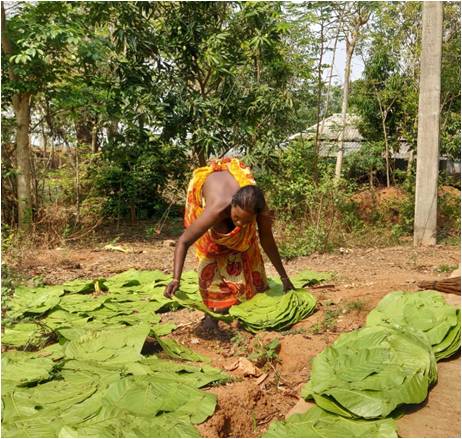-
Establishment of organic nutrition gardens for production of low energy input based safe food
Developed capacity of the small holder farmers, particularly the women to establish organic nutrition gardens in their homestead land to produce organic food. No chemical fertilizers and pesticides are used. The seeds are treated organically, organic manures and bio pesticides are used. The entire process promotes sustainable, low emission production practices. More than 200 such nutrition gardens are established by the PVTGs covering three states, Odisha, Chhattisgarh and Jharkhand since August 2020.
Food is consumed and people have started selling the surplus in the market. It helps in diversification of the livelihood options. It also promotes women empowerment through their engagement in the production value chain.
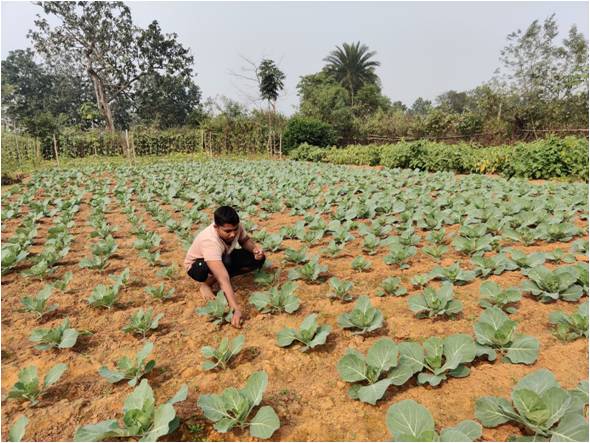
-
Institutional innovations: Formation of Common Interest Groups
Institutional innovations are made at the community level by forming Common Interest Groups (CIG) of like minded people for undertaking different activities. This helps in creating common stake and scaling up the production as well.
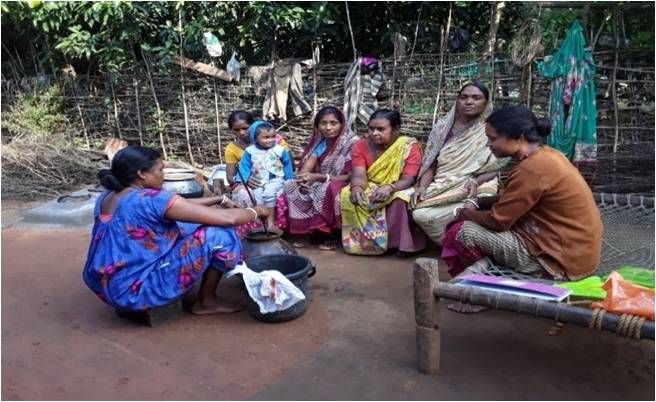
-
Water conservation and sustainable use of water
The smallholder PVTG farmers mostly depend upon rainfed farming. The loss of vegetation due to the degradation of forests has induced high water runoff, topsoil erosion, and depletion of groundwater and soil moisture content. The erratic rainfall pattern due to climate change has worsened the condition and increased the risk of crop loss and low yield.
Community is organized to form groups and conserve the surface water by using technologically feasible, cost-effective, and easily replicable methods. Locally available materials and skills are used to prepare loose boulder check dams across the streams that are flowing beside the villages. It is helping is improving soil moisture content, recharging groundwater, and using the water for irrigation that results in the introduction of new crops in the rabi season.
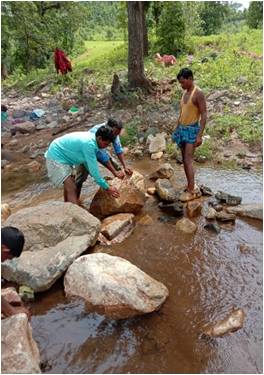
-
Introduction of Fishery
Common Interest Groups are formed to initiate fishery in the unused ponds of the villages. This also promotes diversification of livelihood and income sources.
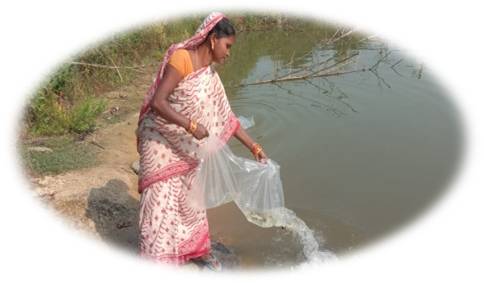
-
Production of vermi compost
To make the people self sufficient for producing organic inputs for agriculture and horticulture crops, CIGs are formed for production of vermi compost. It helps in reducing the cost of production, requires less water and produce safe food. Besides it also opens up a new opportunity of livelihood for the community through sale of vermi compost.
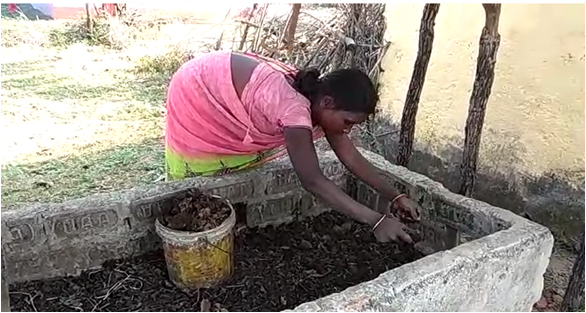
-
Changing land use practices with suitable crops
Land use practices are getting changed from mono cropped agriculture to double cropping practices by introducing suitable crops in the Rabi season.
Crops like mustrad and chana (gram) that can grow with the residual moisture and minimum water requirements are introduced. It also improves the soil fertility.Potato cultivation is introduced by involving 55 persons at Ghoghra and 13 at Bhurbhuspani to begin with.
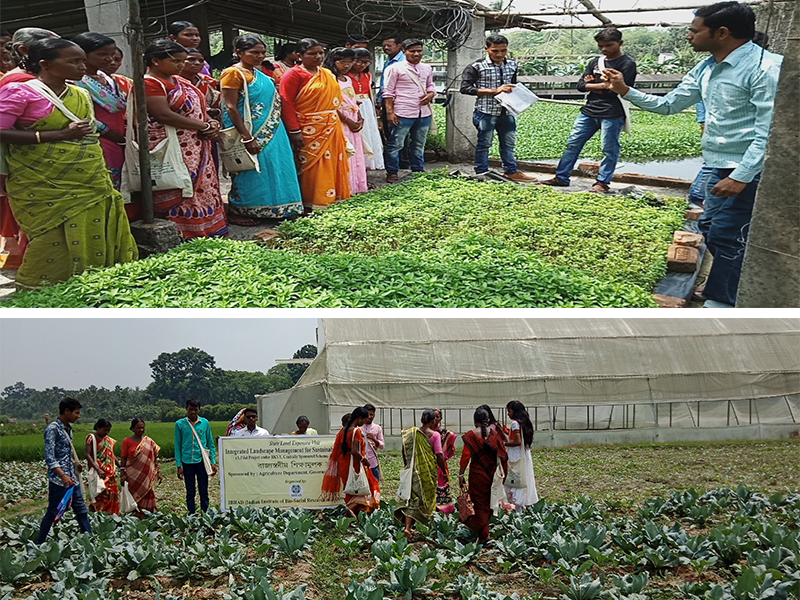
-
Identification of Rare Plants and conservation through herbal gardens
Community capacity is built to identify the medicinal plants, their threat status and establishment of herbal garden for their conservation. Through PRA exercises the medicinal plants that are available in the area but are getting extinct or rare are identified. Reconnaissance survey was conducted in the forest areas with the traditional healers and elderly villagers, their threat status is identified and their uses to treat different diseases as well as the formulations are also documented.
The Baiga, Lodha and Birhor PVTGs of Ghoghra, Nedam and Tatiba villages have started digitally documenting the medicinal plants available in their forest, their threat status, uses of the plants for treating the ailments. All these are documented in the form of short video clips.
Herbal Gardens are established by planting 36 plants that are locally becoming rare and endangered at Nedam and in Kuturguda the initiative started with plantation of six herbal plants in Odisha state. In Ghoghra village 12 plants are planted in the herbal garden.
This will promote conservation of biodiversity, an essential strategy for climate change adaptation and also open up opportunity for new livelihood for the people by linking them with the large market of medicinal plants.
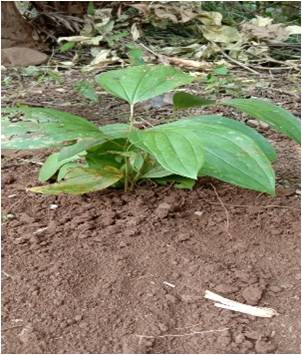
-
Seed conservation
People are organized to conserve the indigenous seeds, land races and cultivars including highly nutritious millets, tubers, cereals and other agriculture crops that are becoming rare or at the verge of extinction. These crops are tolerant to extreme climate, pest and disease resistant and can grow with less water and other inputs. These crops have great potential for ensuring food security in the context of climate change.
PVTG women are taking the lead to identify and conserve the indigenous seeds.
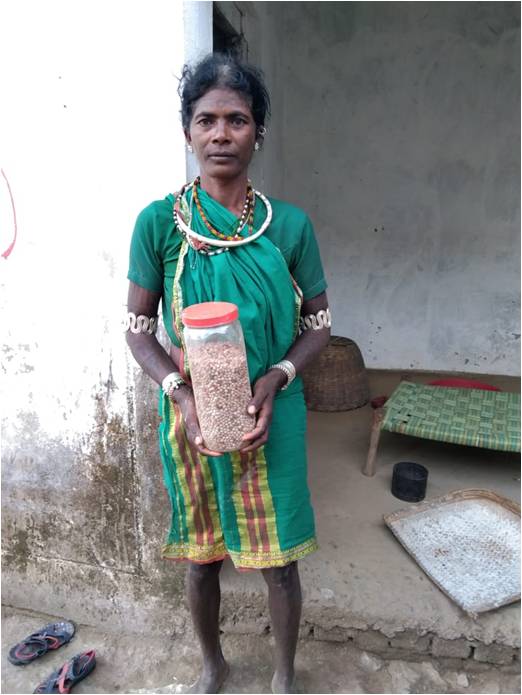
-
Plantation of fruit trees
To diversify the livelihood options of the small holder PVTGs 265 fruits plants are planted by the Lodha and Kutia Khond PVTGs in Nedam and Kuturguda villages. These fruits are good sources for nutrition for the small holder farmers and the surplus will be sold in the market. It will also improve the status of vegetation and help in climate change mitigation through carbon sequestration.
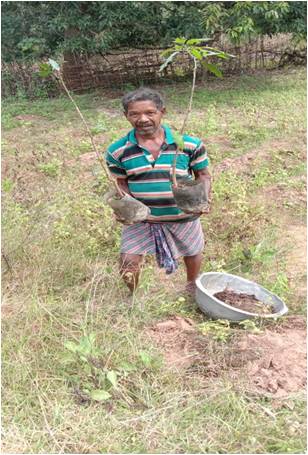
-
Nursery raising
Community is organised to establish small community nurseries to produce quality planting materials. This will again make people self reliant to produce the planting materials on their own, promote plantation in the household and community level and help in carbon sequestration. This action will help in mitigating the climate change impact. Moreover, people will have an alternative livelihood options as well.
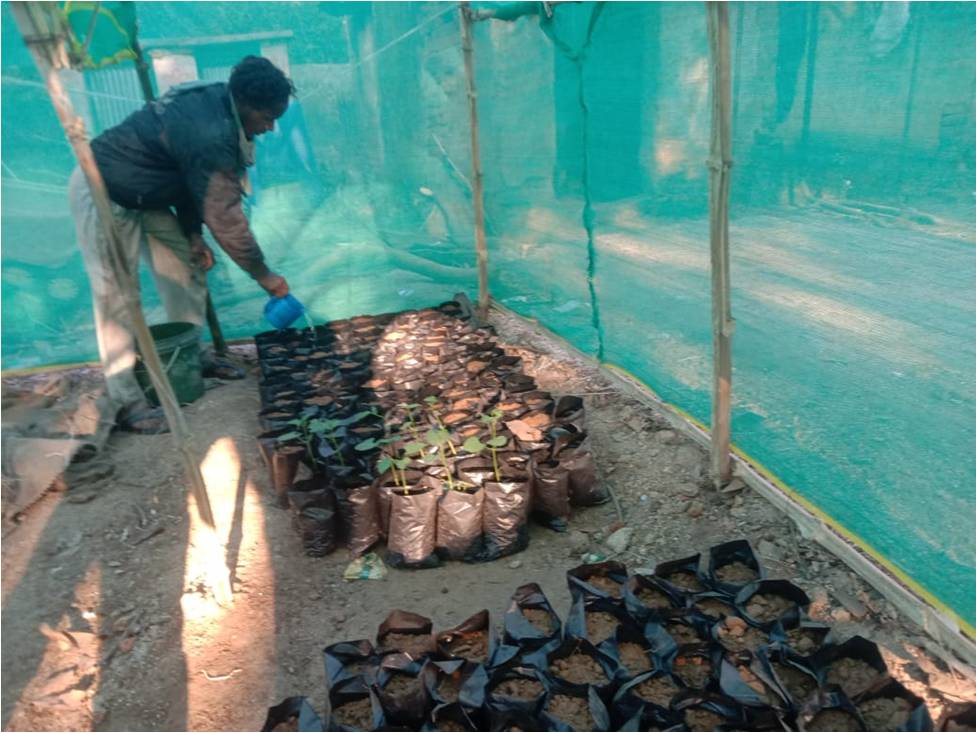
-
Pasture development
Sustainable agriculture practices cannot be achieved without good health of the livestock. The cow dung, cow urine are essential components for production of bio fertilizers, bio pesticides, plant growth promoters. Small ruminants also constitute an important livelihood option for the tribal population. The tribals cannot afford stall feeding and access to forest for grazing is also limited. Hence, pasture land development is essential to ensure supply of regular and quality fodder to the livestock.
Capacity of the community is built to develop pasture in the fallow land available in the village for livestock fodder.
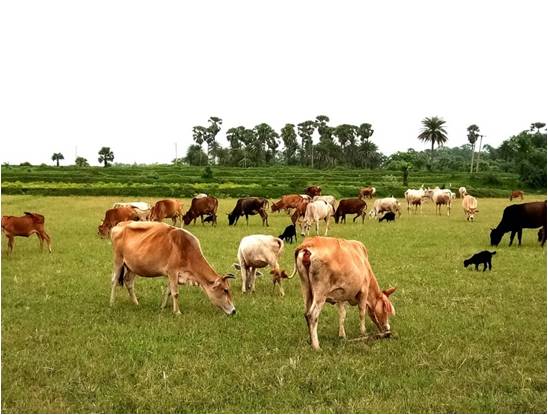
-
Non destructive harvesting, processing and marketing of the NTFPs
NTFP (Non Timber Forest Produces) provides important safety nets to the tribal community especially during the lean season. The skills of the community is built for sustainable and non destructive harvesting of NTFPs, their processing and marketing through branding and promotion.
